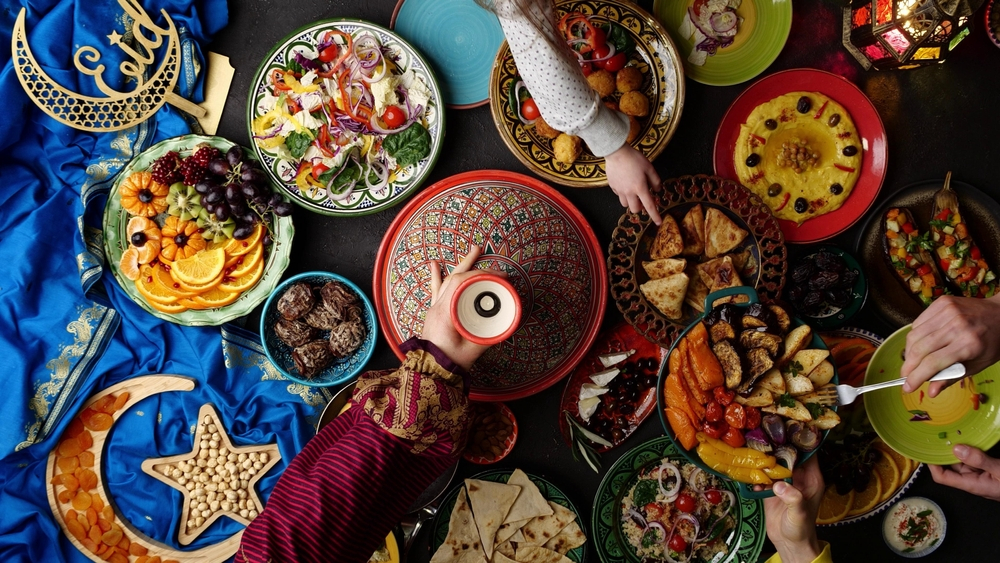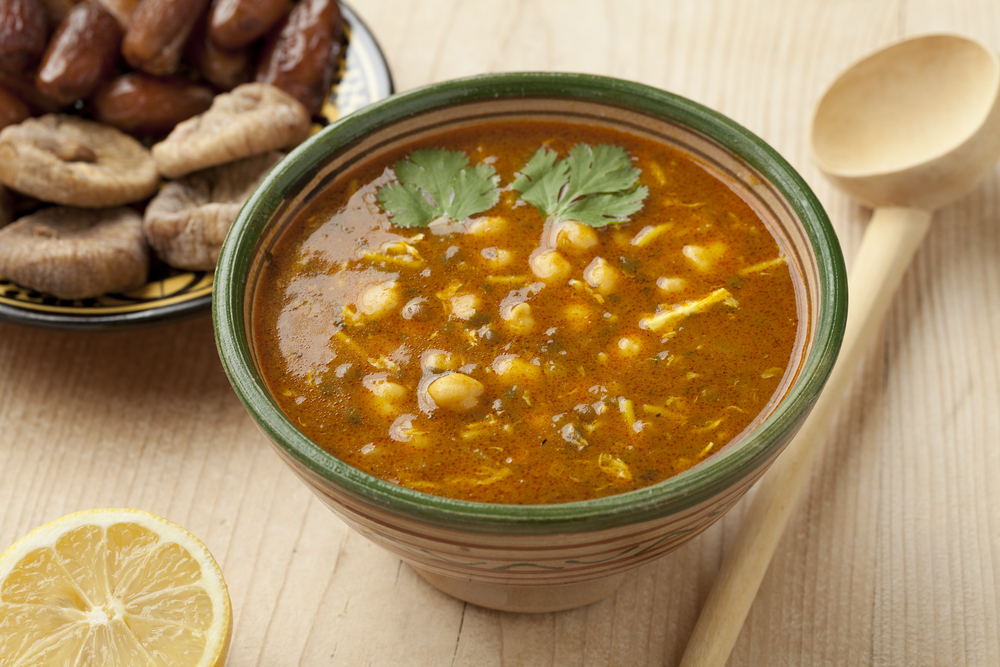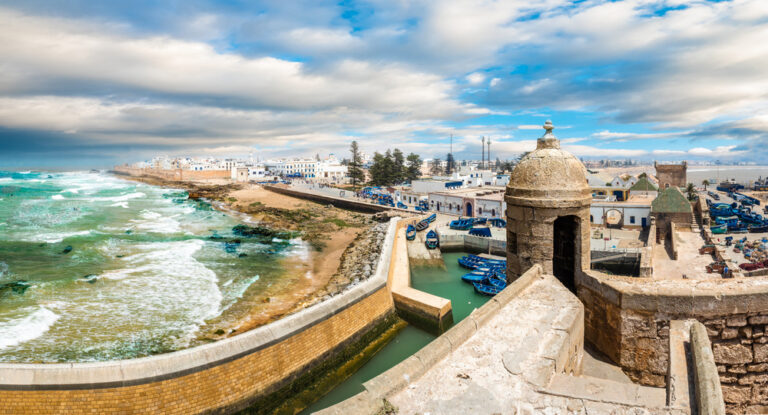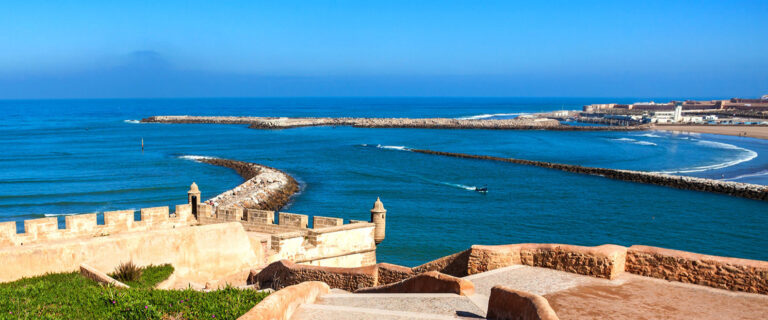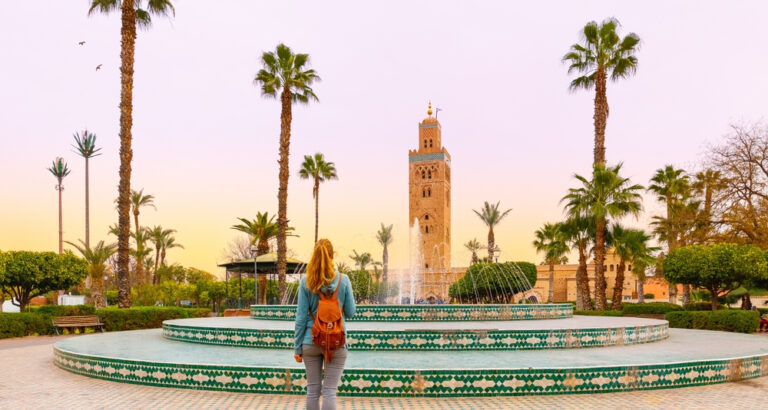Top 10 Moroccan Dishes You Must Try: A Culinary Journey
The enchanting kingdom of Morocco is not just a feast for the eyes but also for the palate. With its rich culinary history that encapsulates influences from the Berbers, Arabs, and French, Moroccan cuisine is a sumptuous blend of flavors and traditions. This comprehensive guide will delve into the top 10 Moroccan dishes you simply must try, providing you not just with an understanding of each dish but also its cultural context, variations, and origins.
The Importance of Food in Moroccan Culture
In Morocco, food is much more than a biological necessity; it’s an expression of culture, family, and hospitality. Meals are communal affairs, opportunities for family and friends to come together and share not just food, but also stories and time. From the spices handpicked in local souks to the tagines slow-cooking over charcoal, each dish tells a story of heritage, place, and the people who made it. Now, let’s embark on this Moroccan cuisine gastronomic journey.
Here is a list of Top 10 Moroccan Dishes You Must Try:
Top 10 Moroccan Dishes You Must Try
Tagine
Description
Tagine is perhaps the most iconic of all Moroccan dishes that is why it takes the fisrt rank of the Top 10 Moroccan Dishe. Named after the conical clay pot it’s cooked in, Tagine is a slow-cooked stew that can feature various meats like chicken, lamb, or fish along with vegetables and fruits like prunes or olives. The flavor profile is usually a rich blend of spices like saffron, turmeric, and cinnamon.
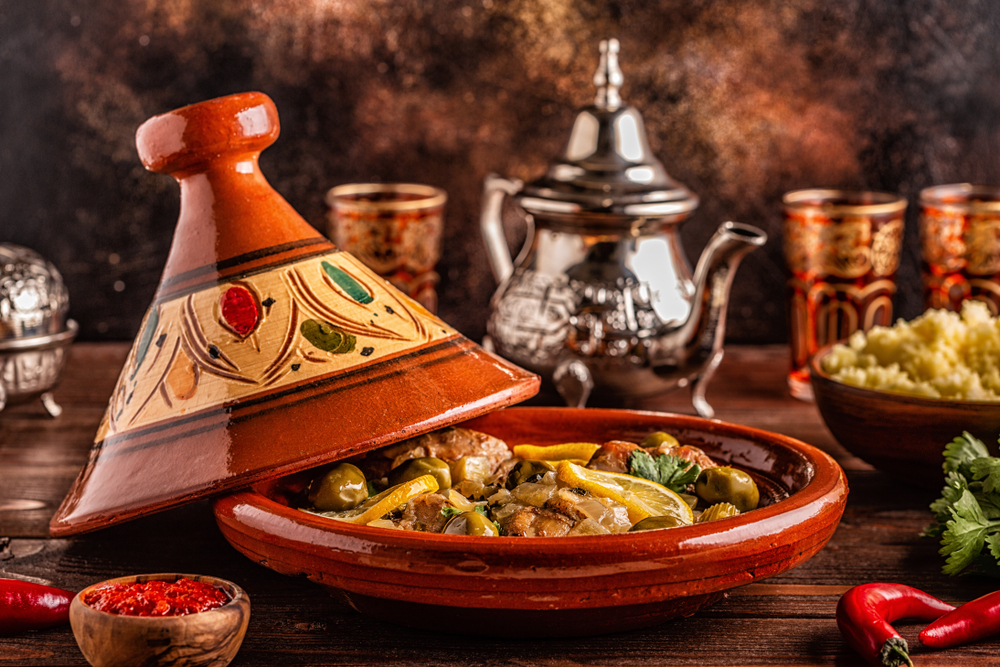
Variations and Origins
The dish’s roots go back to ancient Berber cooking traditions. Over time, the recipe has evolved to include various meats, vegetables, and even seafood. Variations exist depending on the region; for instance, the coastal regions may include fish tagines.
Where to Try
Almost every Moroccan restaurant and household will have their own special version. However, to truly appreciate it, try eating it in a traditional setting with the tagine dish placed at the center of the table, from which everyone eats.
Couscous
Description
Couscous is an important dish of Moroccan cuisine made of tiny steamed balls of semolina wheat, which are often served with vegetables, legumes, and meats. It’s traditionally eaten on Fridays, the Muslim holy day, and during special occasions.
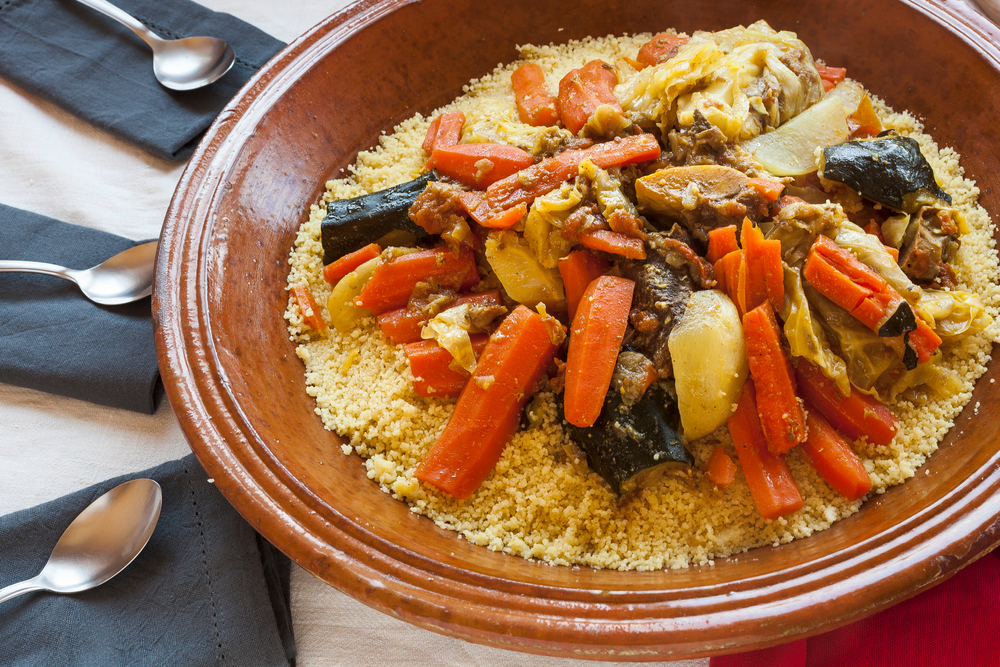
Variations and Origins
Couscous is indigenous to North Africa and is a staple not only in Morocco but also in countries like Algeria and Tunisia. Moroccan variations might include saffron or be served with a tagine-style stew.
Where to Try
While you can find couscous in restaurants, the best versions are often homemade and feature a blend of spices and ingredients unique to each family. Consider taking a cooking class to appreciate the intricacies of this dish.
Harira
Description
Harira is Morocco’s quintessential soup, especially popular during the month of Ramadan to break the fast. Made with tomatoes, lentils, chickpeas, and an aromatic blend of spices, it’s hearty enough to be a meal on its own.
I featured this soup in the Top 10 Moroccan Dishes because it can be regarded as a complete meal, especially when it includes chicken.
Variations and Origins
Though its basic ingredients remain the same, Harira varies from region to region and even from family to family. Some might include rice or pasta, while others stick to the classic combination of lentils and chickpeas. The soup’s origins are believed to be Berber and have been influenced over centuries by Arab and Mediterranean culinary traditions.
Where to Try
Harira is commonly found at street vendors during Ramadan and at traditional Moroccan homes year-round. Restaurants serving traditional Moroccan food usually offer Harira as an appetizer.
Pastilla
Description
Pastilla is a unique Moroccan pie, a delicious mix of sweet and savory flavors. Traditionally made with pigeon, modern versions usually feature chicken. The meat is cooked with saffron and other spices and then wrapped in layers of thin pastry known as “warqa.” I think that no one denies the deliciousness of this dish from the Moroccan cuisine.
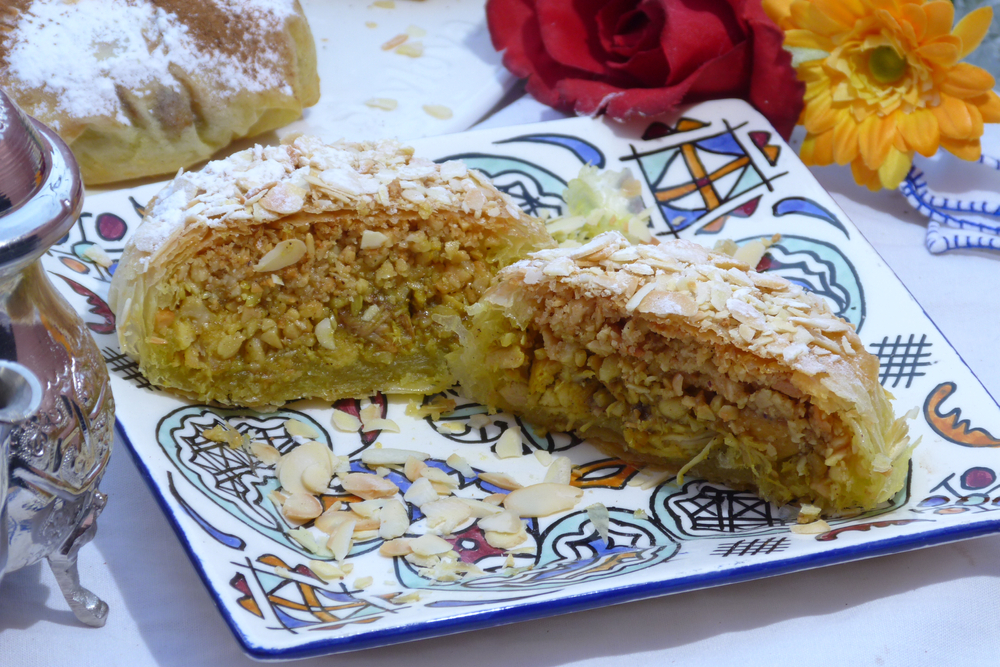
Variations and Origins
Pastilla likely has Andalusian roots, showcasing the sweet-and-savory combo that’s characteristic of medieval Spanish cuisine. The dish can also be made in seafood and vegetarian versions.
Where to Try
High-end Moroccan restaurants and special family occasions like weddings are where you’ll commonly find pastilla. Some cafes offer mini versions as a snack.
Zaalouk
Description
Zaalouk is a delicious cooked salad made primarily from eggplants and tomatoes. It’s often spiced with garlic, paprika, and cumin, then garnished with fresh cilantro.
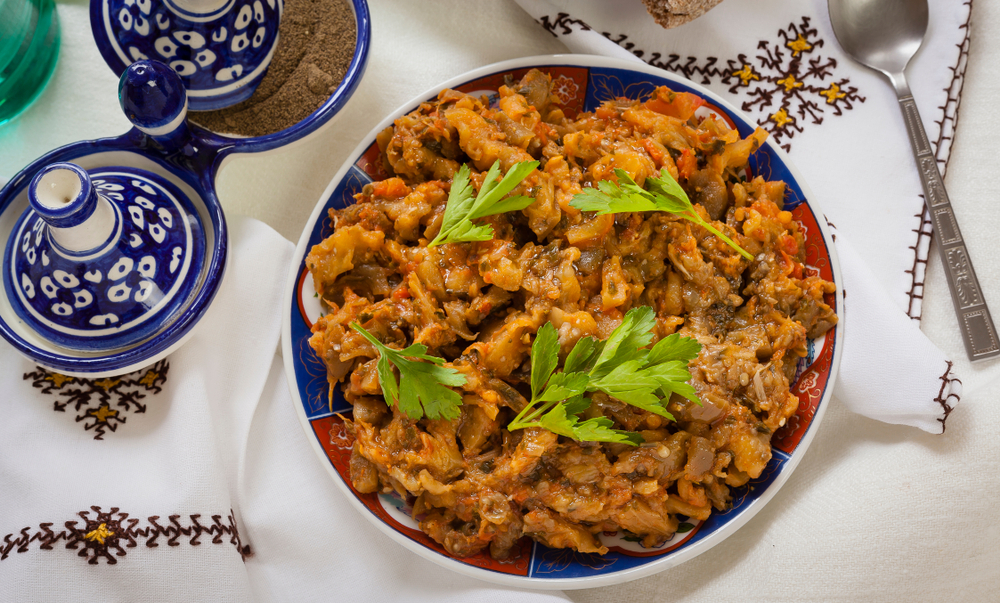
Variations and Origins
Though traditionally made with eggplant, some regions also incorporate other vegetables like zucchini. The dish has Berber origins and is similar to other Mediterranean vegetable mashes like Greek Melitzanosalata.
Where to Try
Zaalouk is a common dish found in Moroccan homes and is often served as a side or a dip in restaurants.
Mechoui
Description
Mechoui is a traditional Moroccan dish that consists of whole lamb slow-roasted in a specially made underground clay oven. The lamb is usually seasoned simply with cumin and salt to let the meat’s flavor shine through.
@accromaroc #pov #fyp #fypシ #foryoupage #foryou #viral #viralvideo #maroc #marrakech #pourtoi
Variations and Origins
Mechoui is often reserved for grand celebrations and special occasions like Eid. The style of cooking and seasoning can differ between regions and even villages.
Where to Try
This is a dish typically enjoyed during special celebrations. You’ll also find restaurants specializing in Mechoui, particularly in cities like Marrakech.
Rfissa
Description
Rfissa is a special Moroccan dish usually made to celebrate joyous occasions like the birth of a baby or a wedding. It consists of shredded chicken, lentils, and a specific type of bread known as “msemen” or “trid,” all soaked in a rich, spiced chicken broth.
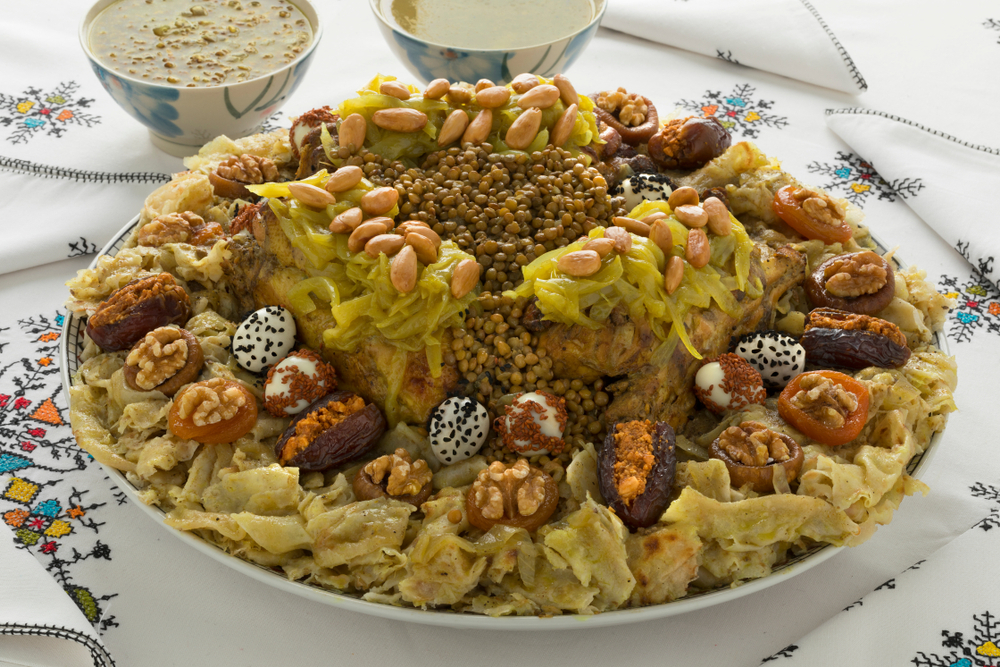
Variations and Origins
Rfissa has different variations depending on the region and family traditions. Some versions include different types of poultry or additional grains like barley. The dish has a long history, blending both Berber and Arab culinary traditions.
Where to Try
Rfissa is best experienced in a Moroccan home during a special occasion. However, some traditional Moroccan restaurants may offer it as part of their special menu.
B’stilla bel Hout (Fish B’stilla)
Description
A twist on the classic Pastilla, B’stilla au Poisson features layers of flaky pastry filled with spiced fish and vermicelli. It showcases Morocco’s rich seafood bounty.
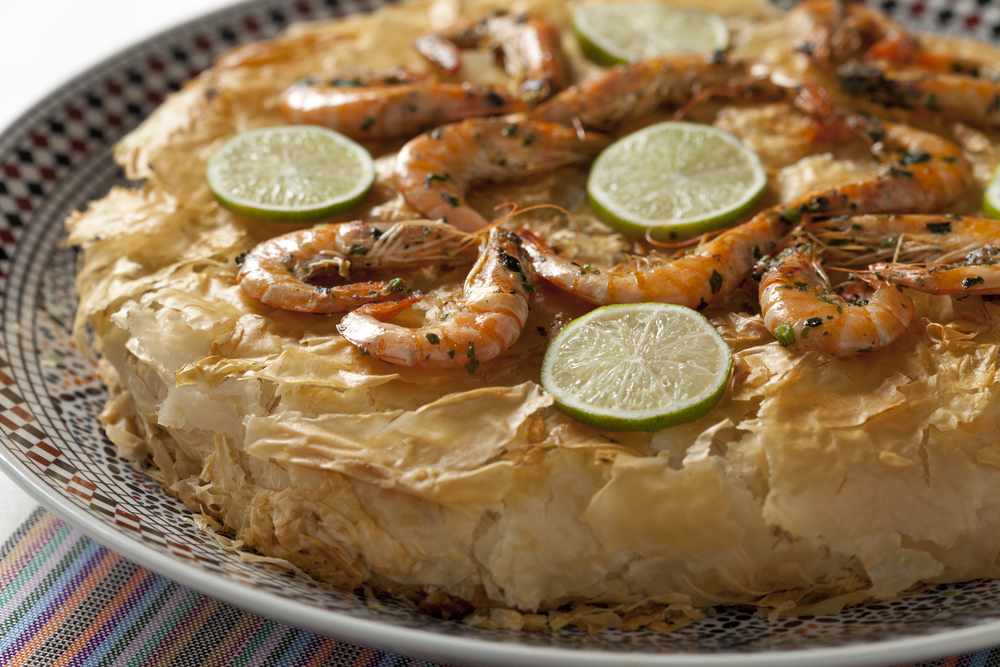
Variations and Origins
The dish originated in coastal areas and has various interpretations that might include different types of fish or even a mixture of seafood. The spices can also vary but commonly include cumin, paprika, and saffron.
Where to Try
You’ll find this dish predominantly in coastal cities like Casablanca or Essaouira, in restaurants that specialize in seafood.
Mrouzia
Description
Mrouzia is a unique tagine dish made with lamb, raisins, almonds, and honey, providing a perfect balance of sweet and savory flavors. It’s often prepared during the Islamic holiday of Eid al-Adha.
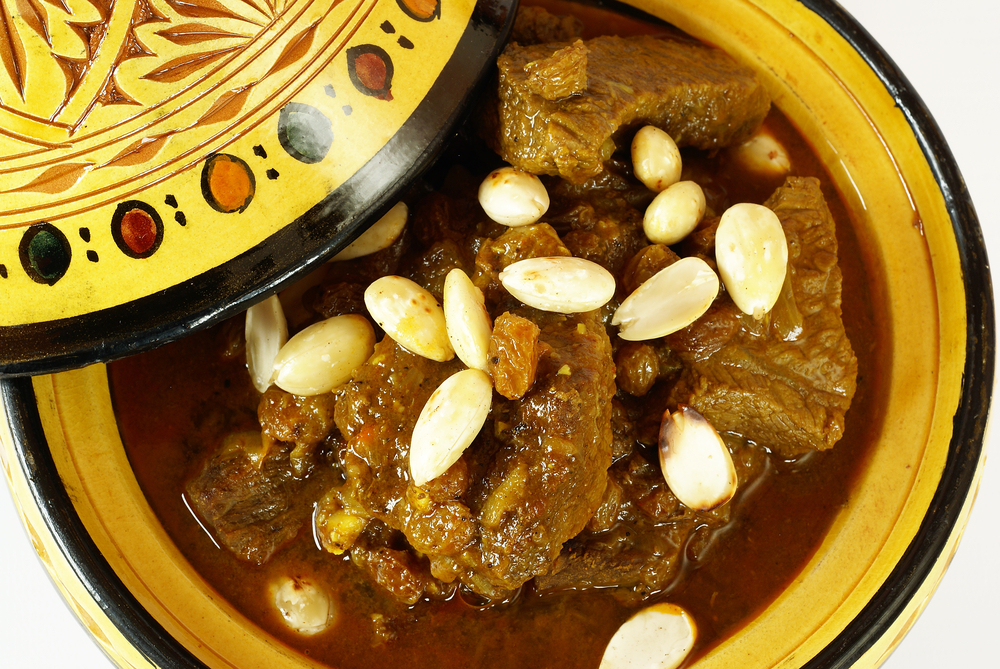
Variations and Origins
The dish is believed to date back to the time when refrigeration was not available. The high content of honey helped preserve the meat. Variations might include the addition of different dried fruits like apricots or dates.
Where to Try
This is most commonly prepared at home during Eid al-Adha but can also be found in traditional Moroccan restaurants that offer special festival menus.
Harcha
Description
Harcha is a type of Moroccan pan-fried bread made from semolina. Soft on the inside and crispy on the outside, it’s usually enjoyed as a breakfast item or an afternoon snack.
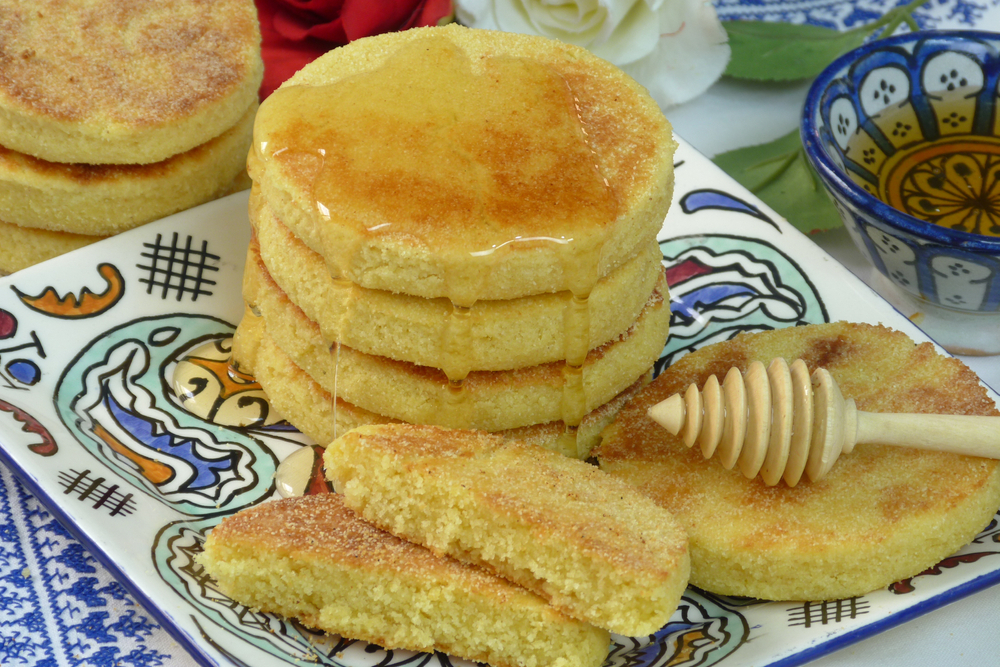
Variations and Origins
Depending on personal or regional preferences, harcha can be sweet or savory, with additions ranging from sugar and orange blossom water to cheese and olives. Its origins are largely domestic, coming from household kitchens rather than royal courts or religious ceremonies.
Where to Try
You can find harcha at breakfast tables in Moroccan homes, street vendors, and also in cafes as a popular snack item.
DIY Moroccan Recipes
Interested in recreating these masterpieces at home? Stay tuned for our detailed Moroccan recipe section, complete with step-by-step guides and pro tips to bring the authentic flavors of Morocco right into your kitchen.
Conclusion
Embarking on a culinary journey through Moroccan cuisine is like traversing a landscape of flavors, textures, and aromas. Every dish tells a story, from the community-based approach of couscous to the age-old traditions encapsulated in a pot of tagine. As you venture through Morocco’s culinary terrain, you’ll discover that the country’s heritage is generously ladled into every mouthful, making each meal a journey through time and culture.

